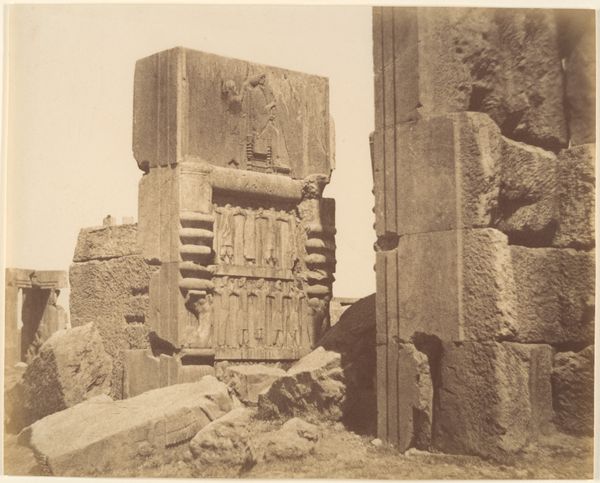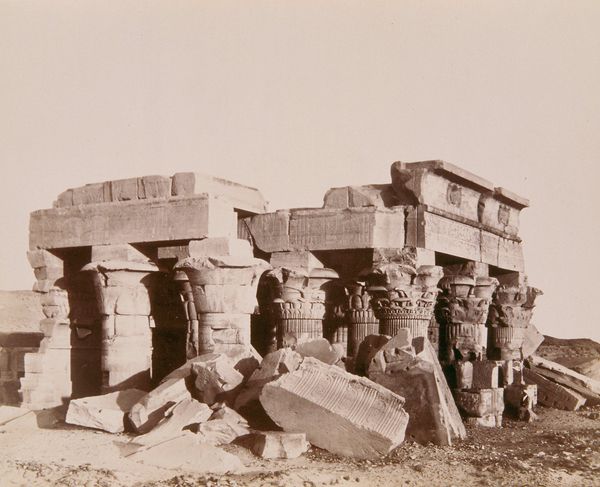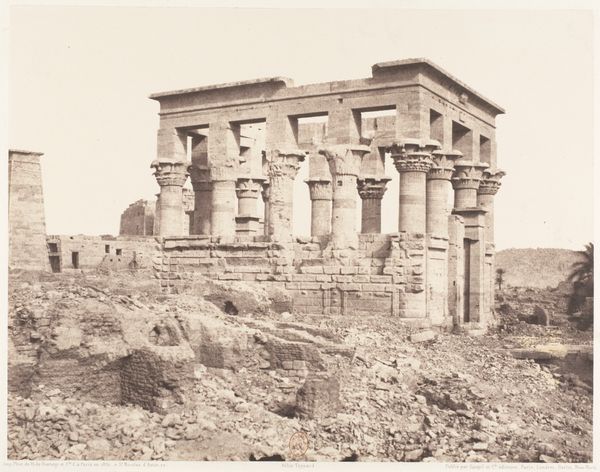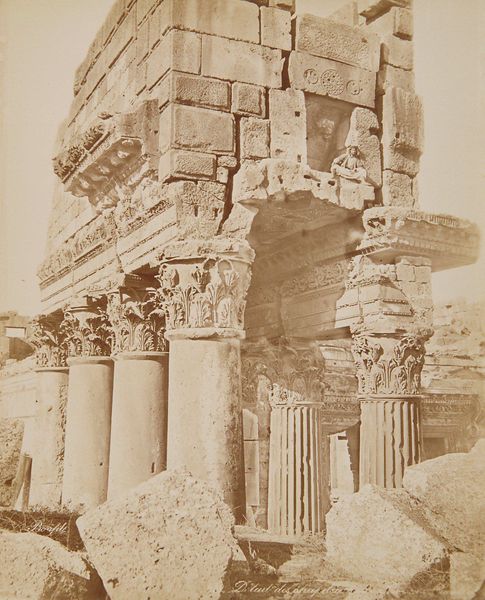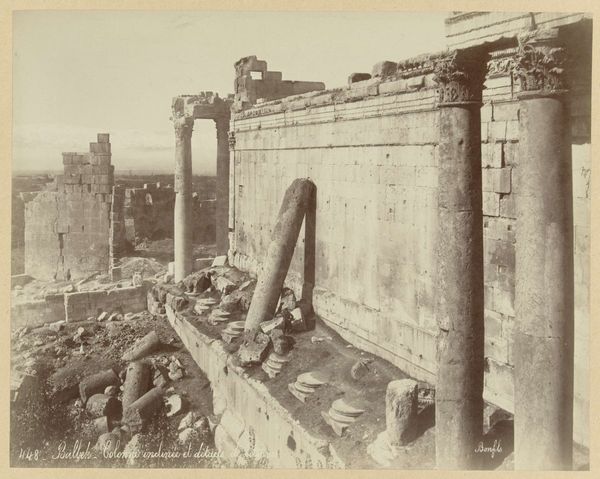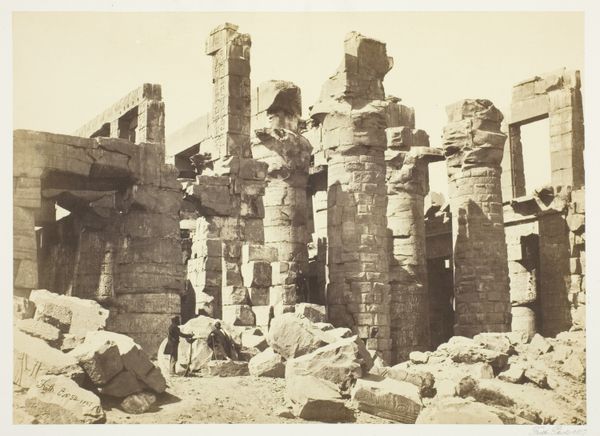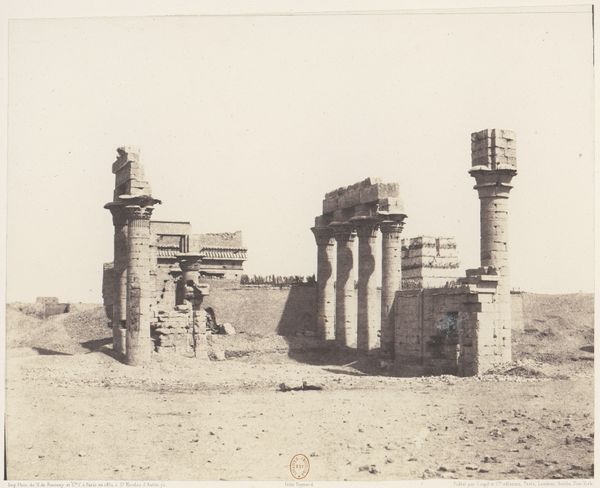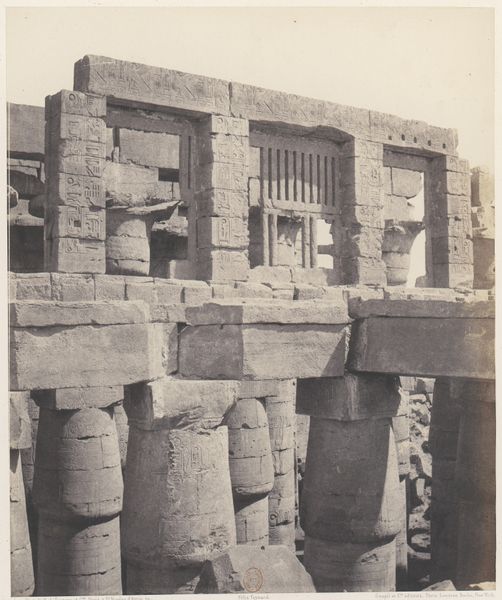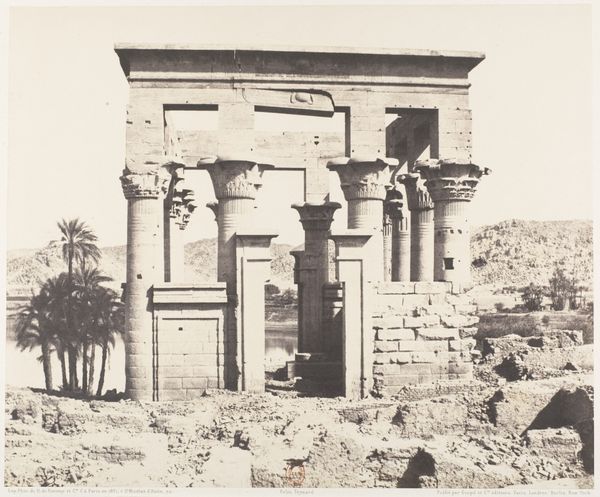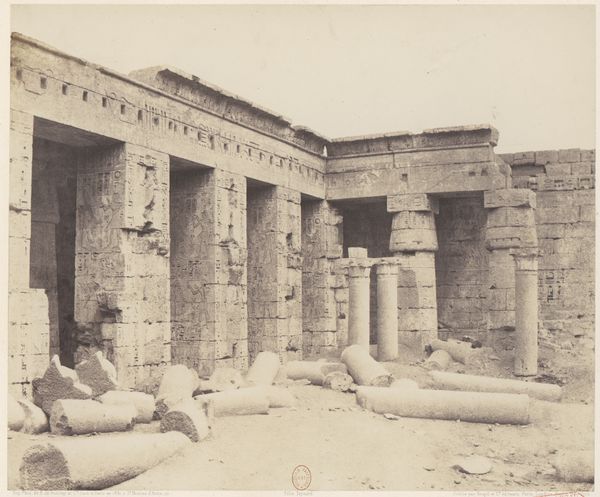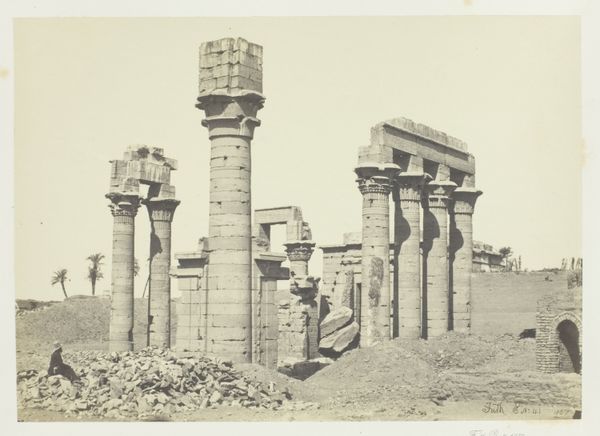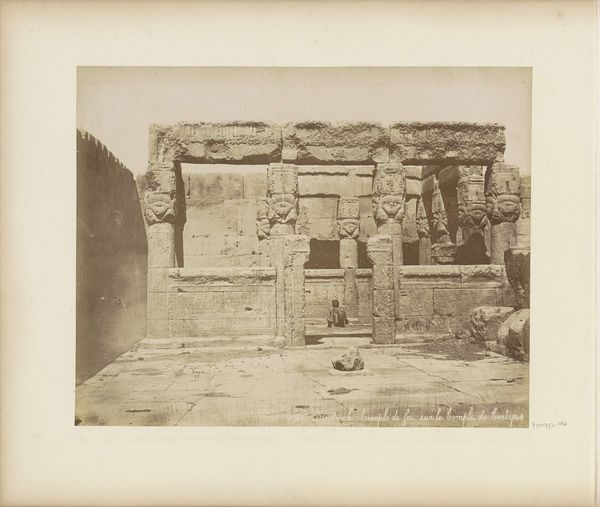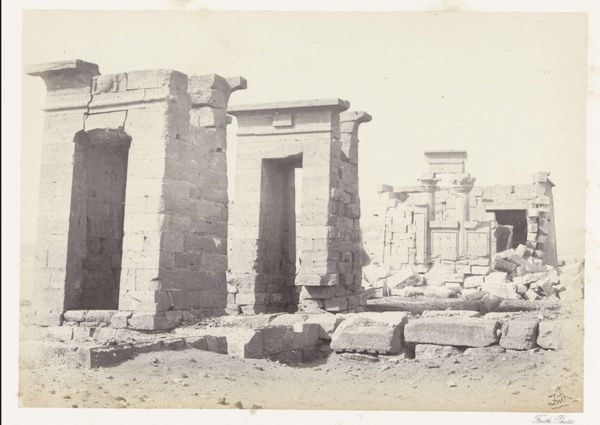
Dendérah (Tentyris), Temple d'Athôr - Sanctuaire Placé a l'Angle Sud-Ouest de la Plateforme Inférieure 1851 - 1852
0:00
0:00
photography, albumen-print, architecture
#
excavation photography
#
landscape
#
ancient-egyptian-art
#
outdoor photograph
#
outdoor photo
#
outdoor photography
#
photography
#
historical photography
#
history-painting
#
albumen-print
#
architecture
Dimensions: 24.1 x 30.8 cm. (9 1/2 x 12 1/8 in.)
Copyright: Public Domain
Curator: I'm immediately struck by the weight of this image. The texture and the decay…it speaks of immense age, yet there’s a certain solidity too. Editor: This is a photograph taken by Félix Teynard between 1851 and 1852, titled "Dendérah (Tentyris), Temple d'Athôr - Sanctuaire Placé a l'Angle Sud-Ouest de la Plateforme Inférieure." It’s an albumen print depicting a section of the Hathor temple complex in Egypt. Curator: The perspective really draws the eye to the crumbling masonry. The light catches the tops of those Hathor-headed columns creating these stark contrasts and powerful sense of three-dimensionality. Editor: What's fascinating is considering this image within the context of 19th-century Egyptology. This was a period of intense colonial interest in ancient Egypt. Teynard's photographs served a documentary purpose, feeding the European hunger for knowledge of these sites. Curator: I can see that documentary aspect. It’s a record, almost forensic in its detail. Yet the choice of viewpoint, the framing…it's undeniably artistic. There's an order in the symmetry, despite the ruin. Editor: Precisely. Teynard was not just passively recording. The choice of vantage point reflects certain assumptions about how these ruins should be perceived and understood. Think about the power dynamics at play when this photograph was first circulated. It reinforces European authority over ancient history and civilization, transforming the past into a commodity to be possessed and displayed. Curator: A commodity viewed through an aesthetic lens, I would say. This image has such beauty to it—the tones are subtle, almost sepia-like, and it is visually arresting. I wouldn't want us to ignore its artistry entirely by focusing solely on its function as a record. Editor: Fair enough, but those formal aspects were carefully curated to evoke a certain response. Awe, perhaps, or even a feeling of superiority in witnessing such a display of ruin. That is to say that photography, at its beginning, had to face its connection with power and politics. It became a popular language of dominance. Curator: An important point that brings into sharp focus, yet another reason why art is important to the study of human experience. Editor: Yes, and this photo encapsulates that intersection beautifully. The architecture provides a foundation, so to speak, for many other types of insight into past human experience.
Comments
No comments
Be the first to comment and join the conversation on the ultimate creative platform.

